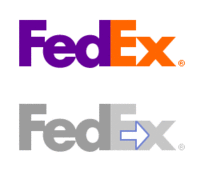

Okay, so another quick entry on the D.Post acquisition of Exel...just so you know I'm still up on the deal.
Over a week ago, the Boards of Deutsche Post and Exel have announced the terms of a recommended Offer for Exel. Under the terms of the Offer, Exel shareholders will receive 900 pence in cash and 0.25427 of a new Deutsche Post share for each Exel share. The Exel Board intends unanimously to recommend the Offer to shareholders. A summary of the key points from the Offer document are shown below.
Rationale and strategic benefitsDeutsche Post believes that there is compelling strategic and financial logic for acquiring Exel and believes there will be significant strategic benefits from combining the two businesses. By offering a share element as well as cash, the Offer allows shareholders to participate in the benefits of combining the two businesses and, if they wish, to retain an investment in the sector.
Deutsche Post believes the proposed acquisition would:
– create a global market leader in contract logistics;
– merge complementary strengths: Exel’s strong position in contract logistics in the UK and US
with Deutsche Post’s activities in Europe;
– create a global market leader in ocean/air freight forwarding;
– enhance the geographical footprint;
– increase exposure to fast-growing regions;
– create a highly attractive financial profile;
– potential for strong cash flow generation through enhanced margins and realisation of
significant synergies.
Management, employees and integration
Deutsche Post views both the management and employees of Exel as critical to the success of the combined group. Deutsche Post plans to work with Exel management to further develop and integrate the business into the enlarged Deutsche Post Group.
Upon successful completion of the acquisition, Deutsche Post intends to appoint John Allan as head of the enlarged logistics business, comprising the combination of Deutsche Post and Exel’s existing logistics activities. Deutsche Post intends that John Allan will lead the integration process and the business will be headquartered in Bracknell, in the UK.
Deutsche Post has given the Board of Exel assurances that, if the acquisition completes, the existing employment rights, including pension rights, of all employees of the Exel Group will be fully safeguarded.
Timescales
The proposed acquisition is to be effected through a Scheme of Arrangement, which requires approval of shareholders at an Extraordinary General Meeting (EGM) and sanctioned by the Court.
Deutsche Post also needs competition clearance in certain countries. If all the above go according to plan, completion is expected to occur in the first half of December.
Deutsche Post (just in case you didn't know)
Deutsche Post is the largest postal operator in Europe and one of the world’s leading logistics companies, offering a comprehensive portfolio of distribution and logistics services on a one-stop-shop basis under the Deutsche Post/DHL brand names. The Deutsche Post Group also includes an interest in Deutsche Postbank, one of the largest retail banks in Germany, which offers a wide range of standardized financial services to over 12 million customers (as of 30 June 2005).
The business is structured under four key divisions – Mail, Express, Logistics and Financial Services.
For the twelve months ended 31 December 2004, Deutsche Post revenues amounted to €43,168 million (£29,295 million). Deutsche Post has a current market capitalisation of approximately €22.3 billion and is a member of Germany’s DAX 30 Index (which includes the largest, publicly-owned companies in Germany).
During the past 15 years, Deutsche Post has transformed its business from a government-managed agency into a multinational group by means of a strategic restructuring and numerous acquisitions. Deutsche Post’s stated vision is to become the leading global logistics company.
Deutsche Post’s activities are organised into the following corporate divisions:
·
Mail (28% of 2004 external revenues) – which offers a comprehensive portfolio of products
and services for paper-based communication;
·
Express (41% of 2004 external revenues) – which offers domestic and international courier,
parcel and express delivery services (DHL Express) and ground transportation services (road-
/rail-based) throughout Europe (DHL Freight);
·
Logistics (15% of 2004 external revenues) – which offers a wide spectrum of domestic and
international logistics services under the "DHL Express/Logistics" brand name. This division
comprises the DHL Danzas Air & Ocean and the DHL Solutions segments. DHL Danzas Air &
Ocean offers worldwide freight forwarding services (organization and management of air and
ocean freight transportation), as well as project logistics and transportation related value-
added services. DHL Solutions provides contract logistics services, developing and
implementing customised and comprehensive logistics solutions for companies;
·
Financial services (16% of 2004 external revenues) – which encompasses the business
activities of Deutsche Bank and payment transaction services.
If you want to find out further information about the Deutsche Post Group please go to their website
www.dpwn.deKeep checking out this Blog and I'll let you know how things progress. TSCHUSS!



























